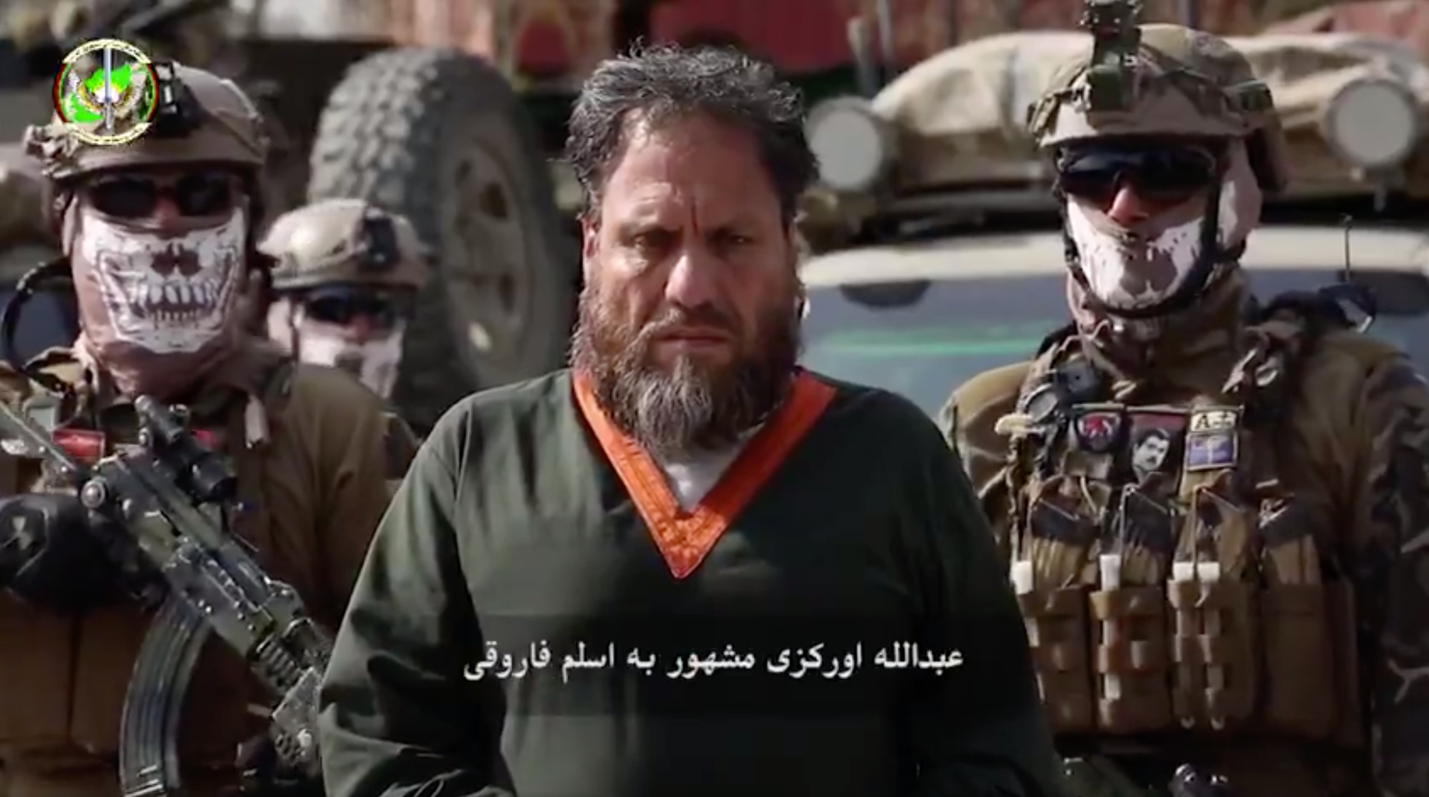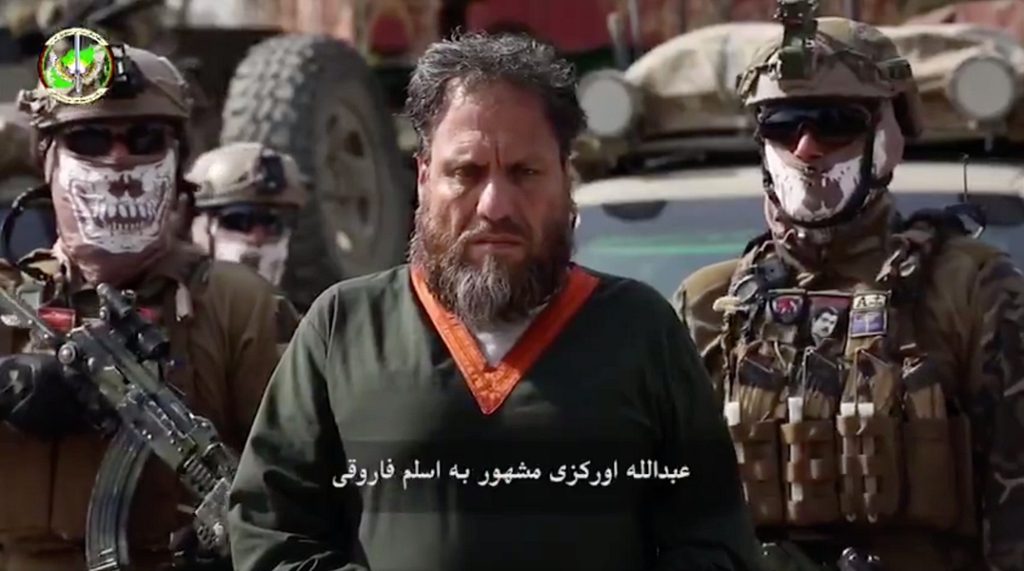On April 15, German prosecutors announced the arrests of four alleged Islamic State (ISIS) members. The men, all from Tajikistan, are accused of plotting attacks on the U.S. Air Force and American military personnel inside Germany. The cell’s members originally considered a strike inside their Central Asian home country but ultimately decided to focus their attention to American service members in the heart of Europe instead. German authorities say the jihadists were collecting arms and precursors for bombs when the cell was broken up.
The German government doesn’t release the last names of terrorist suspects, so the individuals in question have been identified as Azizjon B., Muhammadali G., Farhodshoh K. and Sunatullokh K. Their reported leader, Ravsan B., is also a Tajik. He has been imprisoned since March 2019, but German prosecutors still consider him a prime mover behind the cell’s actions.
The plot is significant. At a time when most of the world is working to contain the coronavirus pandemic, terrorist organizations are still trying to strike Americans. ISIS has called on its members and supporters to capitalize on the West’s divided attention. Although the cell members joined ISIS in January 2019 and began plotting long before COVID-19 became a household term, the jihadists could have accomplished that goal if it weren’t for Germany’s vigilance.
This plot, even though it was disrupted, matters for our understanding of the evolving terrorist threat. The coronavirus has killed far more Americans than ISIS has and perhaps ever will, but terrorism will continue to be security issue for years to come.
ISIS has recruited a base of followers from Central Asia.
The role of Tajiks is unsurprising. ISIS has recruited a base of supporters from Central Asian states such as Tajikistan and Uzbekistan, as well as the neighboring Xinjiang province in northwestern China. (The Chinese government’s repressive policies in Xinjiang could very well drive more Uighur recruits into the jihadists’ arms in the future.) And ISIS has already used Central Asian recruits in attacks on Americans.
On July 29, 2018, five youth in Tajikistan drove their vehicle into foreign cyclists visiting the country. The ISIS followers then jumped out of their car and began stabbing the cyclists with knives, killing four people, including two Americans. This modus operandi—combining vehicles with knives or other blades—is a hallmark of ISIS. The former caliphate has encouraged its supporters around the globe to conduct attacks in this manner, and jihadists have followed through everywhere from Ohio to London. Within hours of the attack in Tajikistan, ISIS produced a video of the terrorists swearing allegiance to Abu Bakr al-Baghdadi. The footage was intended to underscore the direct role ISIS played in guiding the cell. Via its propaganda arm, Amaq News Agency, ISIS has released similar productions after a string of terrorist attacks since 2016.
Most of the Tajiks, Uzbeks, and other Central Asian fighters recruited by ISIS fight abroad — in Afghanistan, Iraq, and Syria. In early March, for instance, an ISIS member from Tajikistan massacred civilians at a Sikh temple in Kabul. But there is always potential for some of these Central Asian jihadists to be repurposed for operations in the West. And ISIS has a substantial Central Asian cadre in place already.
In July 2019, a United Nations expert monitoring team reported that one Tajik, Sayvaly Shafiev (also known as “Mauaviya”), was a senior member of the ISIS-Khorasan branch (ISIS-K). Jihadists use “Khorasan” to refer to a region encompassing Afghanistan, Pakistan, and much of the surrounding countries. At the time, U.N. member states assessed that Shafiev was operating in the eastern Afghan province of Nangarhar, where he led a “contingent of approximately 200 fighters” from Central Asia. Shafiev has also served on the ISIS-K’s “leadership body, or shura” council. The U.N. report’s authors noted that Shafiev was recruiting “Tajik fighters” while raising “funds using online propaganda in the Tajik language.”
So, don’t be surprised if we hear about Tajik ISIS or al-Qaeda terrorists in the future.
ISIS leadership in Syria and Afghanistan helped direct the cell in Germany.
German prosecutors say the Tajiks received direction from ISIS leaders in Syria and Afghanistan. That is an important detail. It demonstrates a fundamental issue with America’s counterterrorism campaign: ISIS still has an unknown number of leaders left to guide the organization.
The U.S. and its allies have systematically targeted the ISIS leadership cadre since 2014, culminating with the raid against Abu Bakr al-Baghdadi’s compound in northwestern Syria in October 2019. There’s little doubt that this high-value targeting has disrupted the group’s chain of command, as well as the jihadists’ ability to carry out terrorist attacks in the West. But multiple official reports say that this effort hasn’t completely dismantled the ISIS management team. Both the Defense Intelligence Agency and U.S. Central Command (CENTCOM) have concluded that Baghdadi’s successor, a previously obscure figure known as Abu Ibrahim al-Hashimi al-Qurayshi, still has enough loyalists to carry out his bidding.
Previous terror attacks in Germany were “remote-controlled.”
ISIS leadership has directed multiple attacks across Europe. A few of these operations—such as the November 2015 ISIS assault on Paris—fit the 9/11 mold wherein professional terrorists are trained abroad and then dispatched to their targets in the West with a general plan in mind. But a series of other plots have followed a different pattern.
European counterterrorism officials have uncovered a series of so-called “remote-controlled” operations. In these attacks, an ISIS handler sits somewhere in Iraq, Syria, or elsewhere and remotely guides new recruits or operatives via encrypted messaging applications. German authorities have had to deal with the “remote-controlled” threat for years. In 2016, for instance, ISIS terrorists carried out small-scale attacks in the German cities of Würzburg and Ansbach. In the former case, an ISIS handler encouraged a teenage Afghan refugee right up until the moment he stepped on a train and began hacking with a machete at passengers on a train stopped in Würzburg. In Ansbach, an ISIS fighter received guidance from a virtual planner just before he accidentally detonated his bomb outside of a music festival.
Many “remote-controlled” plots have been stopped, or they resulted in few casualties. But it is a threat that Western counterterrorism and law enforcement officials take seriously. In fact, the FBI has thwarted a string of “remote-controlled” attempts inside the U.S. Meanwhile, the U.S. military and intelligence services have hunted down ISIS virtual planners abroad. They can be located in any jihadist hotspot—including Afghanistan.
ISIS leader captured in Afghanistan.
On April 5, Afghan security forces announced the capture of Aslam Farooqi (pictured below), a jihadist who served as the emir of ISIS-Khorasan, the former caliphate’s branch in Afghanistan. German authorities haven’t identified him as a point of contact for the Tajik ISIS cell—but it is likely that someone under his employ played that role. The Afghan government accuses Farooqi of masterminding the March 25 assault on a Sikh temple. More than two dozen civilians were killed or captured during that attack.

Farooqi’s arrest is noteworthy because he was handpicked by ISIS central leadership to head the Khorasan arm after his predecessor was deemed a failure. A United Nations monitoring team reported on Farooqi’s accession last year, saying he was nominated for the top post “during a visit by an [ISIS] core delegation” to Afghanistan. That leadership change underscores “the direct relationship between” ISIS-K and ISIS “core” in Iraq and Syria, the UN’s analysts surmised.
American and Afghan forces have taken out several top ISIS-K leaders since 2015. Despite leadership losses and other setbacks, the group continues to launch terrorist attacks throughout the region. And now, according to German authorities, an ISIS-K figure has been implicated in a plan to kill Americans in Europe.
The Taliban doesn’t control ISIS-K.
Which brings us to a flaw in the Trump administration’s thinking on Afghanistan. It’s no secret that the U.S. is looking to withdraw from Afghanistan in the coming months. The Trump administration envisions the Taliban as America’s de facto counterterrorism partner. As part of the withdrawal deal signed by the Taliban and the U.S. on February 29, the Taliban is supposed to ensure that terrorists don’t lash out at Americans from Afghan soil. As I’ve explained previously in Vital Interests, this doesn’t make any sense. The agreement rests on a whitewashed view of the Taliban and its decades-long and unbroken alliance with al-Qaeda. (I’ll have an update on this aspect of the deal in the near future.)
The Taliban also doesn’t control ISIS-K—the two sides have fought one another for several years. So, if the Taliban doesn’t wipe out ISIS-K after the American withdrawal, then the Taliban can’t guarantee that ISIS leaders inside Afghanistan won’t have a hand in operations abroad. And the Germans say that is exactly what happened in the most recent plot. It’s a good thing the Germans, who may have received some assistance from their American counterparts, intercepted the ISIS cell. The Taliban didn’t—and there’s no good reason to think it will disrupt terrorist operations in the future either.






Please note that we at The Dispatch hold ourselves, our work, and our commenters to a higher standard than other places on the internet. We welcome comments that foster genuine debate or discussion—including comments critical of us or our work—but responses that include ad hominem attacks on fellow Dispatch members or are intended to stoke fear and anger may be moderated.
With your membership, you only have the ability to comment on The Morning Dispatch articles. Consider upgrading to join the conversation everywhere.